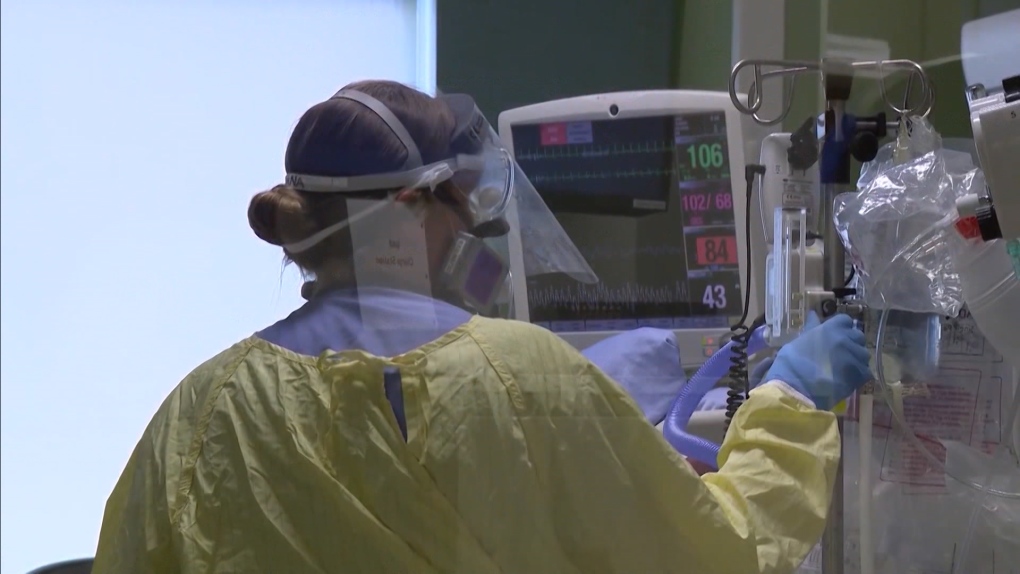A health-care worker is seen in a B.C. hospital in this file photo.
Penny Daflos CTV News Vancouver Journalist
After slow increases in recent years, payments to for-profit staffing agencies have exploded as British Columbia’s health-care system becomes increasingly reliant on their contracted workers to keep hospitals open for emergency care.
In the 2022-23 fiscal year, the overall cost to health authorities ballooned to $162 million, up from just $73.7 million in the previous year, and $8.7 million in 2018-19.
CTV News has spent months trying to pry the information from health authorities, which had reluctantly provided it in past years(opens in a new tab) when we first began examining the post-pandemic phenomenon. The qualified, short-term workers provided by agencies used to be relied on primarily in rural and remote communities to cover vacations or medical leaves in health-care facilities with only a handful of full-time staff.
“We’ve got to keep, particularly, emergency rooms open, so we are doing more agency nurses,” acknowledged Health Minister Adrian Dix.
RELATED STORIES
- B.C. reps eye agency nurses, family doctors as top issues at health ministers’ summit
- Canadian Federation of Nurses Unions studying rising use of agency nurses
- Outcry and pushback against B.C.’s ‘outrageous’ spending on health-care temp agencies
“It’d be nice to make declarations (like), ‘Oh we’re going to end agency nursing,’ but we have to maintain it as we build out and have all the recruitment efforts we’re doing (for unionized public employees) in the communities as well.”
Dix agreed to a one-on-one interview about what he called an “increase” in payments to staffing agencies before his office would provide the actual statistics. CTV News had made multiple requests to each health authority to obtain the latest information since September, and it was only after involving top-level civil servants in the provincial government that the information was provided on Tuesday, June 18.
Warnings came true
Critics had warned the government about the risks of relying on the staffing agencies since CTV News first exposed the issue(opens in a new tab) in August of 2022. Public sector nurses, they said, would be lured away from full-time, unionized work with pensions and benefits, to agency jobs that not only paid for travel expenses and beefed-up salaries, but also couldn’t force them to work overtime or be pressured into undesirable shifts or working conditions they considered unsafe.
When payments to agencies multiplied seven-fold(opens in a new tab) early in the COVID-19 pandemic, the province claimed that was solely due to an urgent need for qualified health-care workers to work in vaccination centres and conduct contact tracing. Health authorities also dismissed it as a small portion of their overall budgets that were used only as a last resort.
But in the latest data, that percentage has soared: Vancouver Coastal Health saw agency nursing go from 0.84 per cent in 2021-22 to 3.17 per cent in 2022-23 while Northern Health went from 8.83 per cent to 15.86 per cent. Only Fraser Health saw a modest increase, going from 0.95 per cent to 1.11 per cent.
What comes next?
Dix suggested that the health authorities have various needs and it’s reasonable that Northern Health with its far-flung communities and long travel times would have the biggest need for short-term contractors to cover shifts. That health authority spent $27 million in 2021-22 and spends the largest amount – with $52 million last year – for the smallest number of residents, but largest geographic area.
The Interior ($8.5 million to $34.4 million, respectively) and Vancouver Island health authorities ($20 million to $37.5 million) face similar challenges of community size and travel.
But geography can’t explain why Vancouver Coastal Health, with the biggest concentration of health-care workers, would go from just $6 million in the 2021-22 fiscal year to a whopping $24 million in the most recent – unless workers were lured by the high pay and more favourable working conditions(opens in a new tab).





